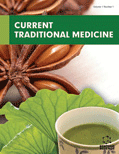Abstract
Diabetes mellitus, an epidemic of the 21st century, is listed as one of the top ten causes of death around the world by the World Health Organization and is a complicated disease to deal with. Medically, a metabolic disorder characterized by elevated blood glucose levels and altered metabolism of biological macromolecules, mainly carbohydrates. Diabetes mellitus has a worldwide prevalence, and populations of all high, middle, as well as low-income countries, are affected by it. More than 400 million persons are currently living with diabetes. Many risk factors, such as lack of exercise, irregular diet, drinking, and smoking habits, as well as genetic factors, also contribute to the increased incidence of diabetes mellitus in the modern era. The conventional therapies for diabetes are based on insulin, insulin analogues, peptides, and oral hypoglycemics. The primary objective is to lower the elevated blood glucose levels and manage the distress to enhance the quality of life of the patient. The management of diabetes is very crucial to avoid complications having serious consequences such as the extra economic burden due to these complications. Conventional drug therapy has its own adverse effects, and its timely availability and cost are still an issue in many low and middle-income countries. Diabetes mellitus has been reported in various ancient kinds of literature along with various natural remedies (plants/herbals) useful in it. These plant-based remedies offer the benefits of lesser or no adverse effects, easy availability due to natural abundance, and low cost. Therefore, extensive research work is carried out in the past few decades to identify and understand the underlying principles of plant-based/herbal medicines to develop new potential lead molecules and a relatively safer, easily available and more economical alternative treatment therapy for diabetes mellitus.
Keywords: Diabetes mellitus, pathophysiology, health, herbal treatment, epidemic, treatment theraphy.
[PMID: 22161426]
[http://dx.doi.org/10.4239/wjd.v6.i6.850] [PMID: 26131326]
[PMID: 23264425]
[http://dx.doi.org/10.1007/s00125-011-2090-z] [PMID: 21350841]
[http://dx.doi.org/10.1111/jdi.12432] [PMID: 27330718]
[http://dx.doi.org/10.1111/pedi.12150] [PMID: 25082184]
[http://dx.doi.org/10.1038/ncpendmet0778] [PMID: 18301398]
[http://dx.doi.org/10.1097/00002727-200404000-00003] [PMID: 15137354]
[http://dx.doi.org/10.3945/an.114.006163] [PMID: 25398736]
[http://dx.doi.org/10.1091/mbc.e15-10-0749] [PMID: 27528697]
[http://dx.doi.org/10.2119/2005-00029.Saltiel] [PMID: 16307172]
[http://dx.doi.org/10.1038/414799a] [PMID: 11742412]
[http://dx.doi.org/10.1136/bmj.328.7442.750] [PMID: 15044291]
[http://dx.doi.org/10.2337/dc10-2268] [PMID: 21715527]
[http://dx.doi.org/10.1111/j.1399-5448.2009.00568.x] [PMID: 19754613]
[http://dx.doi.org/10.1001/jama.2014.3201] [PMID: 24794371]
[http://dx.doi.org/10.3109/07853890008998833] [PMID: 11127931]
[http://dx.doi.org/10.1056/NEJM200002033420501] [PMID: 10655528]
[http://dx.doi.org/10.1186/s13098-018-0341-6] [PMID: 29760789]
[PMID: 2951079]
[http://dx.doi.org/10.2337/diacare.20.7.1183] [PMID: 9203460]
[http://dx.doi.org/10.1093/ajcp/105.2.149] [PMID: 8607437]
[http://dx.doi.org/10.1146/annurev.med.47.1.509] [PMID: 8712800]
[http://dx.doi.org/10.2337/db06-0202] [PMID: 17327436]
[http://dx.doi.org/10.1056/NEJMra002168] [PMID: 11575290]
[http://dx.doi.org/10.1677/jme.0.0270011] [PMID: 11463573]
[http://dx.doi.org/10.1056/NEJM196105252642104] [PMID: 13730123]
[PMID: 14166677]
[http://dx.doi.org/10.1097/00006250-195706000-00008] [PMID: 13431126]
[PMID: 8495594]
[http://dx.doi.org/10.1007/s00592-009-0112-9] [PMID: 19322513]
[http://dx.doi.org/10.1159/000368371] [PMID: 25471093]
[http://dx.doi.org/10.1038/ajh.2009.38] [PMID: 19247266]
[http://dx.doi.org/10.1136/bmj.d6044] [PMID: 22012810]
[http://dx.doi.org/10.1155/2012/918267] [PMID: 22611498]
[http://dx.doi.org/10.1152/physrev.00045.2011] [PMID: 23303908]
[http://dx.doi.org/10.7150/ijms.10001] [PMID: 25249787]
[http://dx.doi.org/10.1038/nrendo.2016.15] [PMID: 26893262]
[http://dx.doi.org/10.2522/ptj.20080008] [PMID: 18801863]
[http://dx.doi.org/10.1016/S0140-6736(10)60484-9] [PMID: 20609967]
[http://dx.doi.org/10.1016/S0140-6736(06)69700-6] [PMID: 17098083]
[http://dx.doi.org/10.2337/diacare.26.9.2653] [PMID: 12941734]
[http://dx.doi.org/10.1111/j.1464-5491.2004.01173.x] [PMID: 15154948]
[http://dx.doi.org/10.1097/00004397-199803820-00005] [PMID: 9604737]
[http://dx.doi.org/10.1179/acb.2004.034] [PMID: 15641391]
[http://dx.doi.org/10.1053/j.ajkd.2004.10.019] [PMID: 15685505]
[http://dx.doi.org/10.1016/j.amjhyper.2004.10.034] [PMID: 15831368]
[http://dx.doi.org/10.1001/jama.293.2.217] [PMID: 15644549]
[http://dx.doi.org/10.1111/j.1743-6109.2008.01168.x] [PMID: 19210706]
[http://dx.doi.org/10.14219/jada.archive.2003.0367] [PMID: 18196667]
[PMID: 21969888]
[http://dx.doi.org/10.4317/medoral.21655] [PMID: 28809366]
[http://dx.doi.org/10.3402/jchimp.v2i2.18701] [PMID: 23882369]
[http://dx.doi.org/10.2337/diacare.16.3.4] [PMID: 8299476]
[http://dx.doi.org/10.2165/00003495-200464130-00003] [PMID: 15212559]
[http://dx.doi.org/10.1345/aph.1C387] [PMID: 12841822]
[http://dx.doi.org/10.1016/j.clinthera.2005.10.009] [PMID: 16330288]
[PMID: 17619527]
[http://dx.doi.org/10.1093/ajhp/62.2.173] [PMID: 15700891]
[http://dx.doi.org/10.2337/diaclin.23.2.56]
[PMID: 19218634]
[http://dx.doi.org/10.4103/0975-7406.90103] [PMID: 22219583]
[http://dx.doi.org/10.1089/jmf.2011.0002] [PMID: 21861724]
[http://dx.doi.org/10.1002/jsfa.6458] [PMID: 24166097]
[http://dx.doi.org/10.1002/chin.200319223] [PMID: 12622244]
[http://dx.doi.org/10.1248/cpb.44.469] [PMID: 8998848]
[http://dx.doi.org/10.4103/0253-7613.100387] [PMID: 23112423]
[http://dx.doi.org/10.1016/S2221-6189(13)60131-6]
[http://dx.doi.org/10.1002/ptr.2650080216]
[http://dx.doi.org/10.1007/BF02659124]
[PMID: 21506494]
[http://dx.doi.org/10.1155/2014/830285] [PMID: 24511547]
[http://dx.doi.org/10.1021/jf205086b] [PMID: 22360666]
[PMID: 19761040]
[http://dx.doi.org/10.1016/S2221-1691(12)60032-X] [PMID: 23569923]
[http://dx.doi.org/10.1016/0031-9422(95)00782-2] [PMID: 8728717]
[http://dx.doi.org/10.1002/(SICI)1097-0282(199803)45:3<231:AID-BIP5>3.0.CO;2-S] [PMID: 9465786]
[http://dx.doi.org/10.1111/j.1600-0897.1997.tb00264.x] [PMID: 9228306]
[http://dx.doi.org/10.1016/j.vetpar.2007.10.003] [PMID: 18022188]
[http://dx.doi.org/10.1016/j.jep.2007.01.022] [PMID: 17314018]
[http://dx.doi.org/10.1002/ptr.3085] [PMID: 20041417]
[http://dx.doi.org/10.1590/S1517-83822011000300021] [PMID: 24031718]
[http://dx.doi.org/10.1097/MJT.0b013e31804c6d1d] [PMID: 18356629]
[http://dx.doi.org/10.1016/j.fitote.2004.10.010] [PMID: 15664463]
[http://dx.doi.org/10.1163/1568560041352257] [PMID: 15265317]
[http://dx.doi.org/10.1055/s-2007-971670] [PMID: 6972048]
[http://dx.doi.org/10.1016/0010-7824(95)00018-6] [PMID: 7621690]
[http://dx.doi.org/10.1016/S0378-8741(02)00059-4] [PMID: 12020931]
[http://dx.doi.org/10.1002/cbic.200300749] [PMID: 15185362]
[http://dx.doi.org/10.1590/S0301-80592000000400001]
[http://dx.doi.org/10.4161/cbt.12.6.16850] [PMID: 21743298]
[http://dx.doi.org/10.1016/j.exppara.2015.02.011] [PMID: 25747203]
[http://dx.doi.org/10.1016/j.jep.2003.09.024] [PMID: 15013179]
[PMID: 10919098]
[http://dx.doi.org/10.1016/S0378-8741(99)00094-X] [PMID: 10617075]
[http://dx.doi.org/10.3923/ijp.2012.21.29]
[http://dx.doi.org/10.1556/AAlim.42.2013.1.2]
[http://dx.doi.org/10.1017/S1479262116000368]
[http://dx.doi.org/10.1016/S0278-6915(01)00056-4] [PMID: 11524136]
[http://dx.doi.org/10.1080/09637480120092062] [PMID: 12775373]
[http://dx.doi.org/10.1016/j.foodchem.2004.06.009]
[http://dx.doi.org/10.1016/j.foodchem.2006.06.063]
[http://dx.doi.org/10.1016/j.lwt.2003.09.001]
[http://dx.doi.org/10.1055/s-0038-1650598] [PMID: 8883285]
[http://dx.doi.org/10.1007/978-1-4615-5919-1_3]
[http://dx.doi.org/10.1007/s00394-009-0007-0] [PMID: 19234663]
[http://dx.doi.org/10.1016/j.foodcont.2012.07.033]
[http://dx.doi.org/10.1089/jmf.2007.0642] [PMID: 19459740]
[http://dx.doi.org/10.1016/j.fitote.2006.03.014] [PMID: 16690223]
[PMID: 11811626]
[http://dx.doi.org/10.1007/s00436-013-3344-0] [PMID: 23435922]
[PMID: 12587728]
[http://dx.doi.org/10.1016/j.fct.2004.08.012] [PMID: 15582196]
[PMID: 7665195]
[http://dx.doi.org/10.3390/molecules24010119] [PMID: 30598012]
[http://dx.doi.org/10.1016/S2221-1691(11)60122-6]
[PMID: 1099271]
[http://dx.doi.org/10.1099/00221287-146-12-3119] [PMID: 11101670]
[http://dx.doi.org/10.1128/aem.53.3.615-617.1987] [PMID: 3555334]
[http://dx.doi.org/10.21859/isv.3.1.19]
[http://dx.doi.org/10.1002/biof.76] [PMID: 20108330]
[http://dx.doi.org/10.1089/jmf.2012.2275] [PMID: 23057778]
[http://dx.doi.org/10.1016/j.phytochem.2010.11.015] [PMID: 21168173]
[http://dx.doi.org/10.1016/j.lfs.2004.11.039] [PMID: 15964306]
[http://dx.doi.org/10.1002/biof.5520260201] [PMID: 16823096]
[http://dx.doi.org/10.1016/S0944-7113(11)80011-5] [PMID: 23196023]
[http://dx.doi.org/10.22159/ijcpr.2017.v9i3.18888]
[PMID: 24379960]
[http://dx.doi.org/10.1016/j.phymed.2005.09.010] [PMID: 17085291]
[PMID: 8979497]
[http://dx.doi.org/10.1300/J044v13n03_10]
[http://dx.doi.org/10.1080/01635581.2013.785010] [PMID: 23682780]
[http://dx.doi.org/10.1097/CAD.0b013e328361aca1] [PMID: 23629478]
[http://dx.doi.org/10.1016/j.resmic.2010.09.008] [PMID: 20868749]
[http://dx.doi.org/10.1002/ptr.2784] [PMID: 19277950]
[http://dx.doi.org/10.1016/S0304-4017(02)00253-4] [PMID: 12383625]
[PMID: 9315239]
[http://dx.doi.org/10.1016/S0378-8741(01)00374-9] [PMID: 11744301]
[http://dx.doi.org/10.1515/JBCPP.2002.13.1.51] [PMID: 12099405]
[http://dx.doi.org/10.1254/jphs.FP0050127] [PMID: 16113498]
[http://dx.doi.org/10.1016/S0378-8741(98)00142-1] [PMID: 10350365]
[http://dx.doi.org/10.4103/0974-8490.79110] [PMID: 21731390]
[http://dx.doi.org/10.1016/S0378-8741(01)00336-1] [PMID: 11694358]
[http://dx.doi.org/10.4103/0974-8490.151457] [PMID: 25829789]
[http://dx.doi.org/10.1016/S0944-7113(00)80015-X] [PMID: 10782484]
[http://dx.doi.org/10.4103/0973-7847.65323] [PMID: 22228948]
[PMID: 12597545]
[http://dx.doi.org/10.1667/0033-7587(2000)154[0455:RPBTOF]2.0.CO;2] [PMID: 11023610]
[http://dx.doi.org/10.1016/j.indcrop.2018.03.048]
[http://dx.doi.org/10.1007/BF02894276] [PMID: 23105475]
[http://dx.doi.org/10.3892/etm.2016.2991] [PMID: 26998000]
[http://dx.doi.org/10.1016/S1995-7645(12)60130-8] [PMID: 22840452]
[http://dx.doi.org/10.1677/joe.1.06615] [PMID: 16614387]
[http://dx.doi.org/10.1016/j.tifs.2016.12.005]
[http://dx.doi.org/10.1080/10408690490424694] [PMID: 15116756]
[http://dx.doi.org/10.1016/0378-8741(86)90085-1] [PMID: 3528673]
[http://dx.doi.org/10.4103/0019-5154.44785] [PMID: 19882025]
[http://dx.doi.org/10.1046/j.1365-2133.2001.04410.x] [PMID: 11703278]
[http://dx.doi.org/10.1016/j.jep.2012.02.040] [PMID: 22446321]
[http://dx.doi.org/10.1016/j.phymed.2017.02.005] [PMID: 28478809]
[http://dx.doi.org/10.1016/j.bmcl.2005.10.096] [PMID: 16297615]
[http://dx.doi.org/10.4103/2229-5119.86268]
[PMID: 10850417]
[http://dx.doi.org/10.4314/ajtcam.v3i2.31154]
[http://dx.doi.org/10.1016/S0944-7113(96)80061-4] [PMID: 23195078]
[http://dx.doi.org/10.2334/josnusd.54.15] [PMID: 22466882]
[http://dx.doi.org/10.1016/j.foodchem.2004.05.052]
[http://dx.doi.org/10.1016/j.fitote.2006.11.008] [PMID: 17336466]
[http://dx.doi.org/10.1002/ptr.3589] [PMID: 21915932]
[http://dx.doi.org/10.4236/pp.2013.48086]
[http://dx.doi.org/10.1111/j.1095-8339.1985.tb00377.x]
[http://dx.doi.org/10.4103/0974-8520.105237] [PMID: 23559789]
[http://dx.doi.org/10.1055/s-0031-1280474] [PMID: 22198821]
[http://dx.doi.org/10.1002/mnfr.201600950] [PMID: 28266134]
[http://dx.doi.org/10.1016/j.lwt.2010.08.013]
[http://dx.doi.org/10.3892/ijmm.11.1.23] [PMID: 12469212]
[PMID: 25149829]
[http://dx.doi.org/10.1016/j.intimp.2011.11.012] [PMID: 22155102]
[http://dx.doi.org/10.1016/j.nutres.2005.09.012]
[http://dx.doi.org/10.1002/(SICI)1099-1573(199806)12:4<233:AID-PTR294>3.0.CO;2-V]
[http://dx.doi.org/10.1016/S1567-5769(02)00292-8] [PMID: 12586606]
[http://dx.doi.org/10.3109/08923970903490486] [PMID: 20100065]
[http://dx.doi.org/10.1016/j.nutres.2007.09.006]
[http://dx.doi.org/10.1002/ptr.1357] [PMID: 14669264]
[http://dx.doi.org/10.1080/02772248.2011.626418]
[http://dx.doi.org/10.2337/diab.47.2.206] [PMID: 9519714]
[http://dx.doi.org/10.1016/j.jep.2004.08.009] [PMID: 15588650]
[http://dx.doi.org/10.1016/j.jep.2004.03.035] [PMID: 15182917]
[http://dx.doi.org/10.1016/0306-3623(92)90131-3] [PMID: 1397965]
[http://dx.doi.org/10.1016/S0378-8741(00)00213-0] [PMID: 10904144]
[http://dx.doi.org/10.1016/S2222-1808(13)60052-3]
[http://dx.doi.org/10.3177/jnsv.47.340] [PMID: 11814149]
[http://dx.doi.org/10.1016/S0378-8741(03)00184-3] [PMID: 12902059]
[http://dx.doi.org/10.1186/1472-6882-7-29] [PMID: 17892543]





























